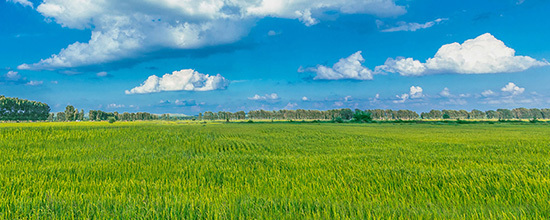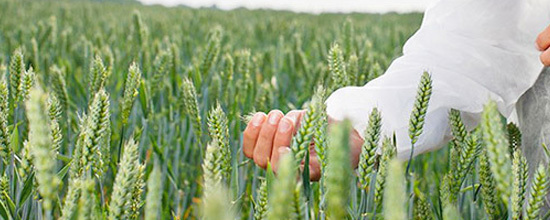PRODUCTS
Golden leaf roller —another important pest of rice
Golden leaf roller —another important pest of rice
In the past two years, a different leaf roller appeared in rice growing areas of China, which has strong migratory ability and rapid reproduction. Its larva is pale yellow, similar to the color of gold, so it is called "Golden Leaf Roller". At present, it has been found in many places including Jiangxi, Sichuan, Guangxi, Zhejiang, Hunan, Hubei and Anhui, and has brought extremely serious harm to rice growth in some areas.

Note: 1. The upper and lower 2 photos on the left were taken in Guangxi in April 2020; 2. The upper photo in the middle was taken in Hunan in June 2020; 3. The lower photo in the middle was taken in Hubei in June 2020; 4. The photo on the right was taken in Anhui in July 2020.
The scientific name of "Golden Leaf Roller" is Susumia exigua, a moth in the Crambidae. The larvae fold the leaves or fix two or more together and feed inside the tunnel created, scraping the leaf surface, making long white scars, which seriously endangers the growth of rice, and will have a serious impact on agricultural production when a large number of larvae occur.

Common leaf roller larvae Golden leaf roller larvae
The main differences between the golden leaf roller and the common leaf roller are as follows:
1. Colour
The body of the golden leaf roller is yellow, while the common leaf roller is cyan;
2. Drug resistance
The golden leaf roller has steel thorns, which makes it difficult for pesticides to penetrate, so it has stronger drug resistance;
3. Life habits
More information shows that the golden leaf roller is a local overwintering pest, while the common leaf roller is a migratory pest.

Common leaf roller
Why is it difficult to control the golden leaf roller?
1. The "golden leaf roller" feeds inside the curly leaves, which makes it difficult for most chemicals to contact with insects, so the efficacy is greatly reduced;
2. Due to the many varieties of rice planted in the rice area, the different planting time, and the long growth period, the probability and cycle of the occurrence of leaf rollers increase;
3. Long-term use of abamectin and emamectin benzoate enhanced the drug resistance of leaf roller population;
4. The suddenness of the golden leaf roller, the inadequate control technology, the missed optimal control time, and the lack of suitable chemical control programs have accelerated the occurrence of pests.
How should we prevent and control scientifically and efficiently? I think if the following points can be achieved, it will not be difficult to control the golden leaf roller and increase production.
1. Rational drug use
Increase water consumption when spraying, spray evenly and thoroughly. It is recommended to spray before 10: 00 am or after 4: 00 pm, which is beneficial for insects to contact pesticides;
For example, chlorfenapyr and lufenuron are used together, emamectin benzoate/abamectin and chlorfenapyr/indoxacarb.
2. Spraying monopotassium phosphate to promote the maturity of functional leaves and prevent premature aging
Excessive nitrogen fertilizer and shady fields will aggravate the occurrence of rice leaf roller. At the same time, as the flag leaf matures, it is not suitable for leaf rolling and feeding by the larvae of rice leaf roller. Therefore, spraying monopotassium phosphate to promote the maturity of flag leaves and increase the ability of rice plants to resist diseases and pests is the key measure to control rice leaf rollers.
It is recommended to add 20ml of fluid boron to promote the development of spikelets at the booting stage and promote flowering and fertilization at the heading stage. In addition, In addition, the combination with monopotassium phosphate can also promote the fullness of grain at filling stage;
3. Scientific management of water and proper drying of fields
For rice fields with good water retention, it is suggested to dry the fields properly at tillering stage and booting stage if the temperature is not too high, which can reduce ineffective tillering, reduce field concealment, enhance root activity, promote the absorption of water and nutrients, and prolong the life of functional leaves.
In addition, it can also reduce the humidity in the field and reduce the hatching of larvae. Deep water irrigation for 2-3 days during the peak period of pupation to kill the pupae.





 LANGUAGE
LANGUAGE